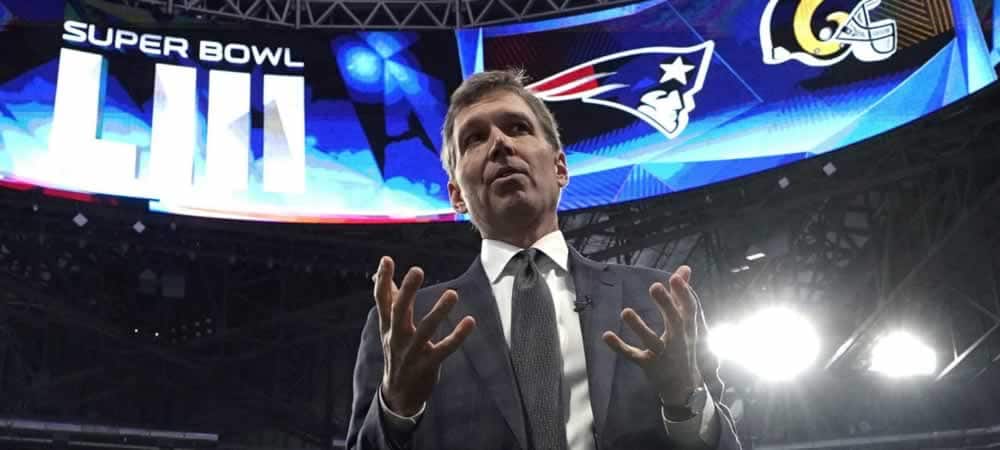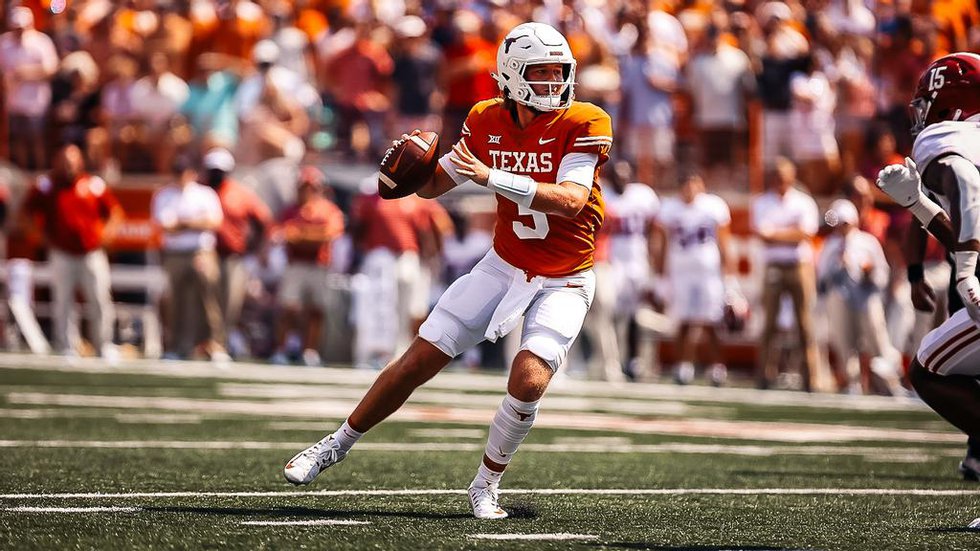- Pooling NFL and NCAA data could help reduce player leg injuries.
- Cleat and turf technologies are being targeted for improvement.
- Lower-body ailments comprise the majority of football-related injuries.
INDIANAPOLIS – In Indianapolis on Monday and Tuesday, the NFL hosted a league presentation on its new injury-tracking and data-sharing initiative with the NCAA.
While the NFL has an obvious working relationship with the NCAA (which is effectively the league’s exclusive talent developer), their formal communications are typically muted.
In the case of injuries, however, that seems to be a thing of the past.
The NFL’s presentation was helmed by Dr. Allen Sills, the league’s Chief Medical Officer (CMO). NFL executive VP for health and safety initiatives, Jeff Miller, was also on hand.
The NCAA’s Sport Science Institute was in the audience in Indianapolis, as were various medical staffs of schools in the major power five conferences.
While concussions have long stolen headlines and dominated the public mindshare when it comes to football injuries, the focus has shifted to lower-body injuries. Concussions remain important in the safety discussion, but leg injuries keep more players off the field than any other injury type.
The NCAA’s own data backs up this assertion.
In explaining the rationale behind the meetings, Sills briefed the Associated Press about the NFL’s approach.
“We’re able to show [the NCAA] what we’re working on and what we’re finding and how we’re applying that knowledge into the day-to-day care of professional athletes. I think we hope this is the start of even more regular interaction between the two organizations because we share the exact same goals, which is improving the health and safety of players.”
Miller concurred, discussing the new lower-body injury research that has progressed over the years.
“We’re taking a very, I think, comprehensive approach to understanding foot, ankle or knee injuries and the contributing aspects of that.”
The main angle in addressing such injuries is currently focused on footwear and turf technologies, says Miller.
“[W]e are looking at the performance of certain cleats; their traction; how easily they release from different turf surfaces; how much different turf surfaces contribute to potential injuries; how we train our athletes, the load they go through on a daily basis or through a training camp and whether that correlates with particular sprains or strains.”
As helmet technologies have advanced (alongside certain rule changes), concussion rates have decreased. The hope is to achieve similar results regarding cleats, playing surfaces, and support apparel.
Of course, this research partnership isn’t limited to leg injuries. Sharing player health data between the NFL and NCAA should allow both leagues to make rapid improvements in mitigating football injuries across the board.
How Better Injury Data Could Affect Sports Betting
In the NFL, injury reports have long been used to give the betting world an indication of what to expect on gamedays. This is arguably the reason that the injury report concept exists in the first place.
However, in the NCAA, injury reports are not mandatory.
After all, the NCAA has historically frowned upon sports betting even in historical markets like Las Vegas, so it isn’t remarkable that the league never went out of its way to cater to sports gamblers.
Now that sports wagering is becoming mainstream, though, that could change.
It isn’t clear whether the NFL or NCAA intends to use this new shared-data initiative to refine or establish their own injury reporting protocols, however. Player health is a noble enough pursuit on its own.
Still, as sports betting grows in the popular media, there are likely to be plenty of calls for the NCAA to institute a mandated injury report system. It is also likely that the NFL’s current injury report standards will face scrutiny.
Right now, the NFL Injury Report Policy is specifically outlined but far from comprehensive. Teams can easily game player statuses if they believe doing so gives them a competitive advantage.
A famous example: New England Patriots quarterback Tom Brady has been listed on the weekly NFL injury report 186 different times. Yet of those 186 games, he never missed a single start.
While such tactics are valid, many will argue that they’re not particularly good for sports bettors. Many will also argue that this consideration is functionally irrelevant.
And maybe that’s true. Maybe the sports bettor is irrelevant to how leagues should conduct their business.
But now more than ever, it sure doesn’t look that way.
Advertising Disclosure
In order to provide you with the best independent sports betting news and content LegalSportsBetting.com may receive a commission from partners when you make a purchase through a link on our site.
News tags: Dr. Allen Sills | football | Indiana | Indianapolis | injuries | Injury reports | Jeff Miller | NCAA | NFL | Sport Science Institute | Tom Brady

Andy has been writing professionally for nearly two decades, with the last three years being dedicated to his primary passions: sports wagering news and gambling industry analyses. A walk-on punter, Andy has a particular interest in professional football, baseball, and horse racing betting. Come early May, you can always catch Andy – clad in all white, mint julep in hand – on Millionaires Row at Churchill Downs. In his dreams.


 College Football Betting
College Football Betting Best Online Sports Betting
Best Online Sports Betting Best Legal NFL Betting
Best Legal NFL Betting States With Legal Sports Betting
States With Legal Sports Betting Sports Betting Events
Sports Betting Events




